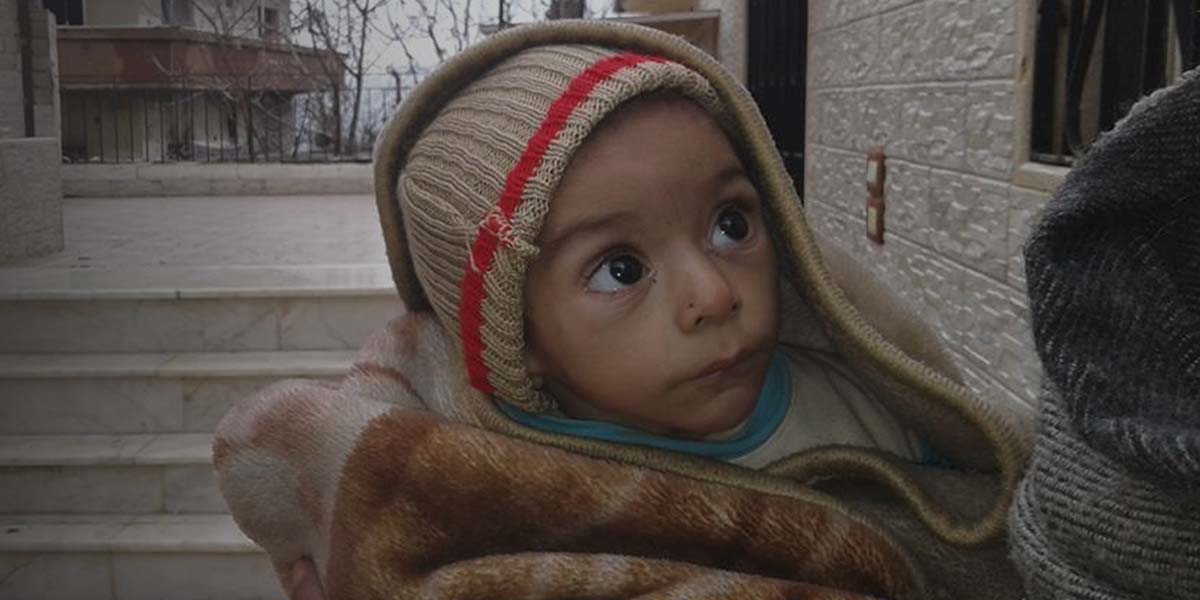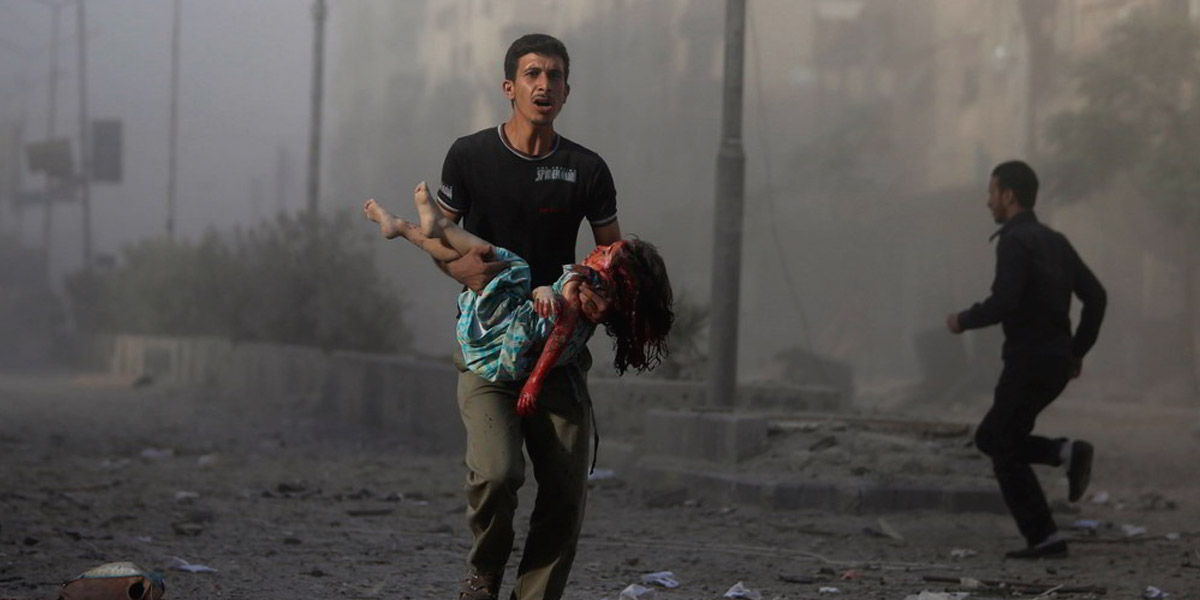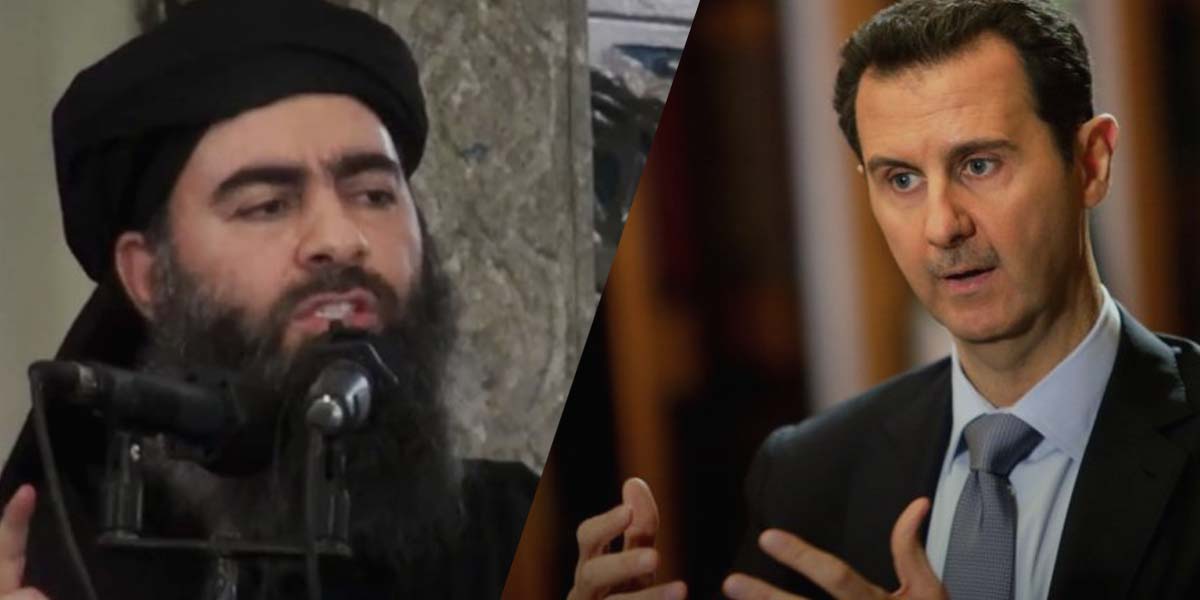“We can’t take it anymore. Why is there no help for us? We have mothers, sisters, brothers. We are human just like you.”
Khaled, Madaya
Checkpoints and snipers were installed on all the key routes in and out of their area. No food or medicine was allowed in. Electricity and water were cut. Anyone trying to enter or leave the area would be shot dead.
The starting gun had been fired on one of the most cruel and hidden sides of the war in Syria: Bashar al-Assad’s “submit or starve” policy. The sieges. A year earlier those same streets were packed with tens of thousands peacefully demanding freedom and dignity after decades of dictatorship. Now they were facing a medieval siege at the hands of that same regime.
Today a million people are living under these sieges while tonnes of the world’s aid remains undelivered, often only minutes away. Civilians in these areas who have nothing to do with the fighting are often forced to eat leaves, insects and even cats to survive. Others that can afford it can sometimes buy food from smugglers, though often at thousands of times the original cost. Hundreds of people have starved to death while many thousands have died from malnutrition-related illnesses.
These people are needlessly dying because UN aid trucks and planes are being denied access to besieged areas by the Assad regime. Access that has been granted repeatedly by the UN Security Council. Meanwhile, the regime is taking billions of dollars of the same aid to feed people in areas under its control.
Break the silence. Break the sieges.
"Most days are massacre days"
Nazeer, Douma
At rush hour the first missile struck, fired from a regime fighter jet into a crowd of hungry shoppers.
Dozens were killed instantly, bodies mixed with wasted food and shattered stalls. As rescue workers gathered at the scene to try and save the injured, more missiles were fired, a “double-tap strike”, aiming to kill as many innocent people as possible.
When these bombs rain down, volunteers from the White Helmets rush in. These rescue workers dig for life from under the rubble - across Syria they’ve saved over 40,000 lives. Under the daily massacres of the siege, they are sometimes the only hope for survival.
These aerial attacks of the Assad regime are the biggest single killer of civilians in the conflict today. Russia, an open ally of Bashar al-Assad, is now actively participating in these bombing raids that not only target markets, but schools and hospitals too. These attacks are much worse in siege areas as people can't leave -- there is nowhere to run. And for those who are injured, medical supplies and personnel are at critically low levels.
Like so many of Syria’s massacres, the Douma market bombing of August 16th went largely ignored by the world, even though the death toll by the end of the day had climbed to over 100, including many children. The same area witnessed the century’s worst chemical attack two years earlier, when hundreds were killed with banned gas sarin.
The international community has the power to stop these aerial attacks but the first step is to speak out about them. Break the silence. Break the sieges.
“Everyone giving something is a hero. The average person is the hero. Each person is giving what they can.”
Elias, Douma
They are the heroes who can get you your next dose of dialysis, dig you up from under the rubble, keep your children in school or find a way to get you perhaps one meal a day.
Creativity keeps people alive. Pharmacists have started making their own medicines, doctors improvise surgical tools, performing operations by mobile phone light. Engineers connect bicycles to batteries in order to power mobile phones, others melt plastics to make fuel.
Underneath all of this resilience is a deep love and solidarity with others who are suffering the siege. There are countless stories of endless generosity from those who have almost nothing giving to those who have even less.
It is in the deepest, darkest corners of the siege that humanity shines at its brightest.
We must stand in solidarity with these heroes, and tell their stories to the world.
Break the silence. Break the sieges.
"ISIS and the regime are both enforcing the siege and benefiting financially"
Karam, from Deir Ezzor
Of the 52 besieged communities in the country, 49 of them are under siege by the Assad regime, two of them by the rebels, and one of them by Isis and the regime.
One of the largest individual sieges is on the eastern city of Deir Ezzor where 200,000 people live. It is externally besieged by Isis. But the area is also being denied aid by the Assad regime, which controls the population inside. The regime is denying UN requests to deliver aid to Deir Ezzor, despite using the airport multiple times a day to resupply its own military inside the siege. Civilians in Deir Ezzor are in effect besieged by both Isis and the Assad regime.
The numbers are stark. 99% of those under siege in Syria are being denied access to aid by the Assad regime.
Break the silence. Break the sieges.

This is permission the UN does not even need, since Security Council resolutions 2165, 2191 and 2258 authorise it to deliver aid without the regime's consent. Unnecessary bureaucratic hurdles are being created as people starve, in some cases just a few minutes away from stockpiled aid. The UN must do its job and send the aid in. If there are security concerns as a result, they should be immediately reported to the Security Council so it can take any further measures necessary to guarantee safe delivery.
There is little transparency on UN siege statistics, and there are dozens of areas that are clearly besieged but are not on their list. The town of Madaya, where starving civilians recently made headlines and front pages around the world, is not considered a siege by the UN.
The proximity of key UN staff in Damascus to the Assad regime is a concern often raised, while others say the staff in Damascus do not want to push the regime for fear of having their visas revoked.
News that the UN aid office in Damascus agreed in December 2015 to a last-minute request from the Assad regime to remove the words “siege” and “besieged” entirely from the UN’s key fundraising document for 2016 - the Humanitarian Response Plan - only confirms these suspicions to many.
There are many staff within the UN - both international and local staff - who want the organisation to be bolder and stand up to the Assad regime in Syria. However, it is those at the top of the UN agencies who are refusing to give the green light for these urgently-needed aid deliveries.
If you are a UN employee and would like to share additional information with campaign organisers, please get in touch. All correspondence is confidential.



